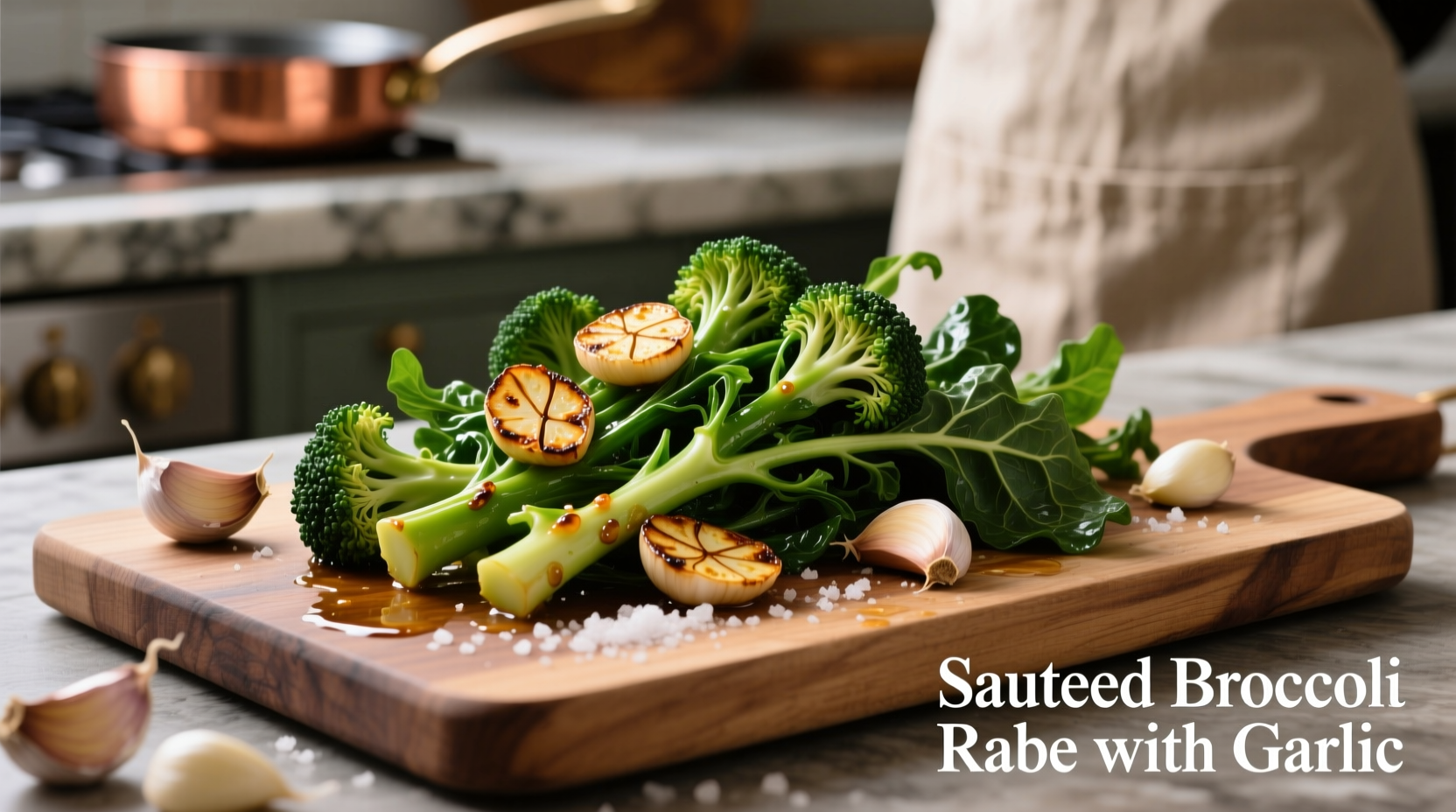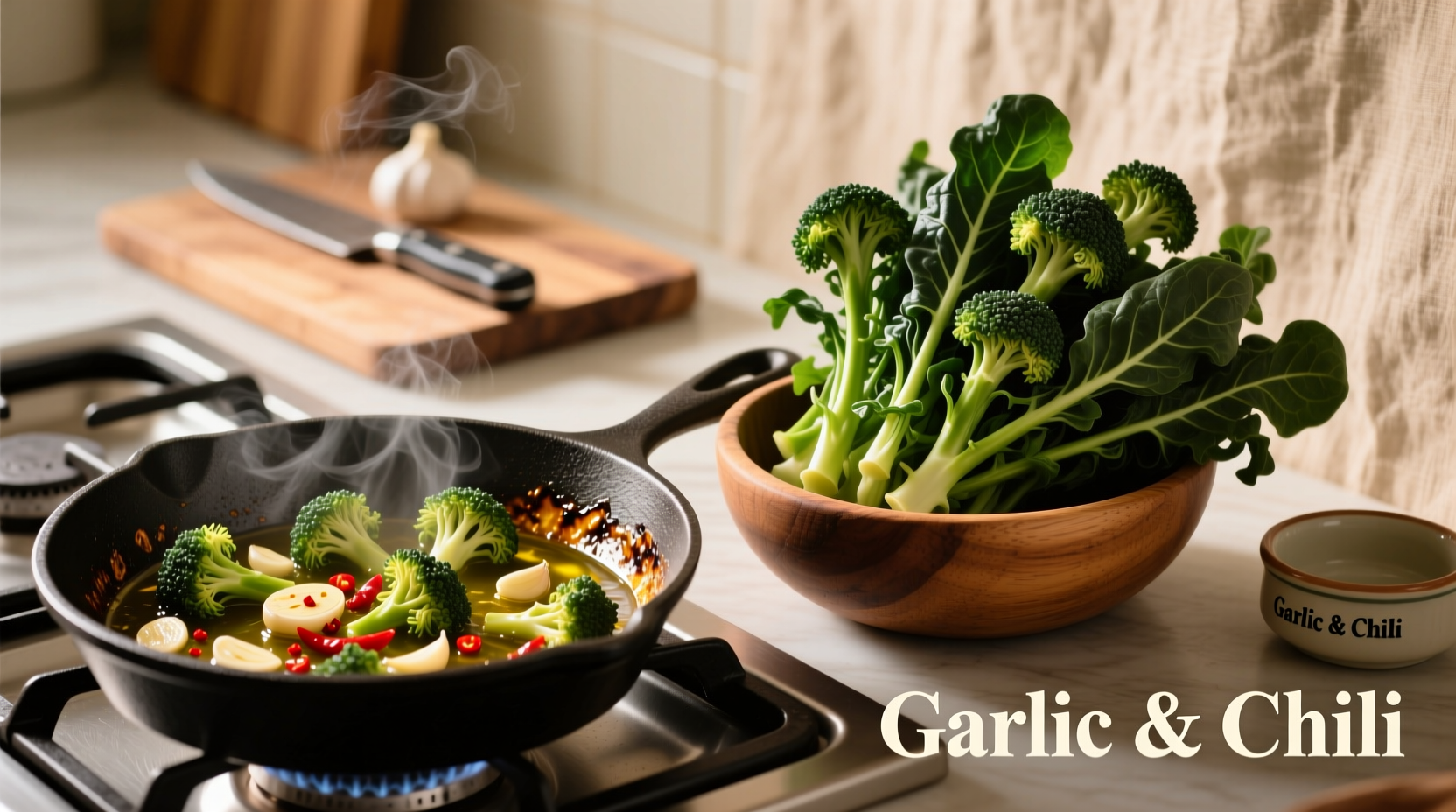Blanch broccoli rabe for 2-3 minutes in salted boiling water, then sauté with garlic and red pepper flakes in olive oil for 5-7 minutes until tender-crisp. This simple two-step method reduces bitterness while preserving texture and nutrients—perfect for Italian-American dishes like pasta con broccoli rabe.
Broccoli rabe (also called rapini) intimidates many home cooks with its reputation for intense bitterness. But with the right technique, you'll unlock its complex, nutty flavor that chefs prize in Italian, Portuguese, and Chinese cuisines. This guide reveals the precise blanching times and flavor-balancing tricks professional cooks use to transform this cruciferous vegetable into a crowd-pleasing side dish in under 20 minutes.
Why Broccoli Rabe Tastes Bitter (And How to Tame It)
Broccoli rabe contains glucosinolates—natural compounds that create its signature bitter taste as a defense mechanism against pests. These water-soluble compounds decrease significantly when exposed to heat and salt. According to USDA agricultural research, blanching in heavily salted water (¼ cup per gallon) reduces bitterness by up to 60% while preserving more nutrients than prolonged boiling. The key is precise timing: under-blanching leaves excessive bitterness, while over-blanching turns stalks mushy.
| Cooking Method | Optimal Time | Bitterness Reduction | Texture Result |
|---|---|---|---|
| Raw | N/A | 0% | Crisp but intensely bitter |
| Blanching | 2-3 minutes | 50-60% | Tender-crisp stalks |
| Sautéing alone | 8-10 minutes | 30-40% | Uneven texture |
| Roasting | 15-18 minutes | 40-50% | Caramelized edges |
Essential Prep: Washing and Trimming
Start with 1 pound of fresh broccoli rabe. Separate any thick stalks from thinner ones—thick stalks need extra cooking time. Submerge in cold water with 1 tablespoon of vinegar to remove grit, swishing vigorously. Trim ½ inch from the bottom of stalks. For mature plants with tough stalks (over ½ inch diameter), peel the lower 2 inches with a vegetable peeler. This preparation step follows FDA food safety guidelines for leafy greens to minimize contamination risk.

The Two-Step Cooking Method That Works Every Time
Step 1: Blanching (2-3 minutes)
Fill a large pot with 4 quarts of water and ¼ cup kosher salt (this concentration mimics seawater, optimizing bitterness reduction). Bring to rolling boil. Add broccoli rabe and cook exactly 2 minutes for tender stalks, 3 minutes for thicker varieties. Immediately transfer to ice water bath for 1 minute to stop cooking. Drain thoroughly, squeezing gently to remove excess water.
Step 2: Sautéing (5-7 minutes)
Heat 3 tablespoons extra-virgin olive oil in large skillet over medium heat. Add 3 thinly sliced garlic cloves and ½ teaspoon red pepper flakes. Cook 30 seconds until fragrant but not browned. Add drained broccoli rabe, 2 tablespoons lemon juice, and sauté 5-7 minutes tossing frequently until tender-crisp. Finish with flaky sea salt and lemon zest.
Pro Chef Techniques for Flavor Mastery
Italian chefs in Puglia (where broccoli rabe originated) use these professional tricks:
- Acid balancing: Add lemon juice during cooking, not after, to help break down bitter compounds
- Fat selection: Use high-quality olive oil—the polyphenols bind with bitter molecules
- Timing precision: Cook thicker stalks 2 minutes before adding leafy parts for even doneness
- Flavor layering: Deglaze pan with ¼ cup white wine after garlic for complex depth
Regional Cooking Variations Worth Trying
Broccoli rabe adapts beautifully to different culinary traditions:
- Italian-American: Toss with penne pasta, grated Pecorino Romano, and reserved pasta water
- Portuguese: Simmer with linguiça sausage and white beans for espargos
- Chinese: Stir-fry with fermented black beans and Shaoxing wine
- Modern twist: Roast at 425°F with lemon slices and pine nuts for caramelized edges
Avoid These Common Mistakes
Even experienced cooks make these errors:
- Skipping the blanch: Sautéing alone never fully reduces bitterness
- Overcrowding the pan: Causes steaming instead of proper sautéing
- Burning the garlic: Burnt garlic creates harsh bitterness that overwhelms the dish
- Under-salting: Salt is crucial for neutralizing bitter compounds
Storing Leftovers Properly
Cooked broccoli rabe keeps for 3-4 days in airtight container. To revive leftovers, place in skillet with 1 teaspoon water and cover for 2 minutes over low heat—this steams rather than dries the greens. Freezing isn't recommended as texture becomes unpleasantly soft.











 浙公网安备
33010002000092号
浙公网安备
33010002000092号 浙B2-20120091-4
浙B2-20120091-4